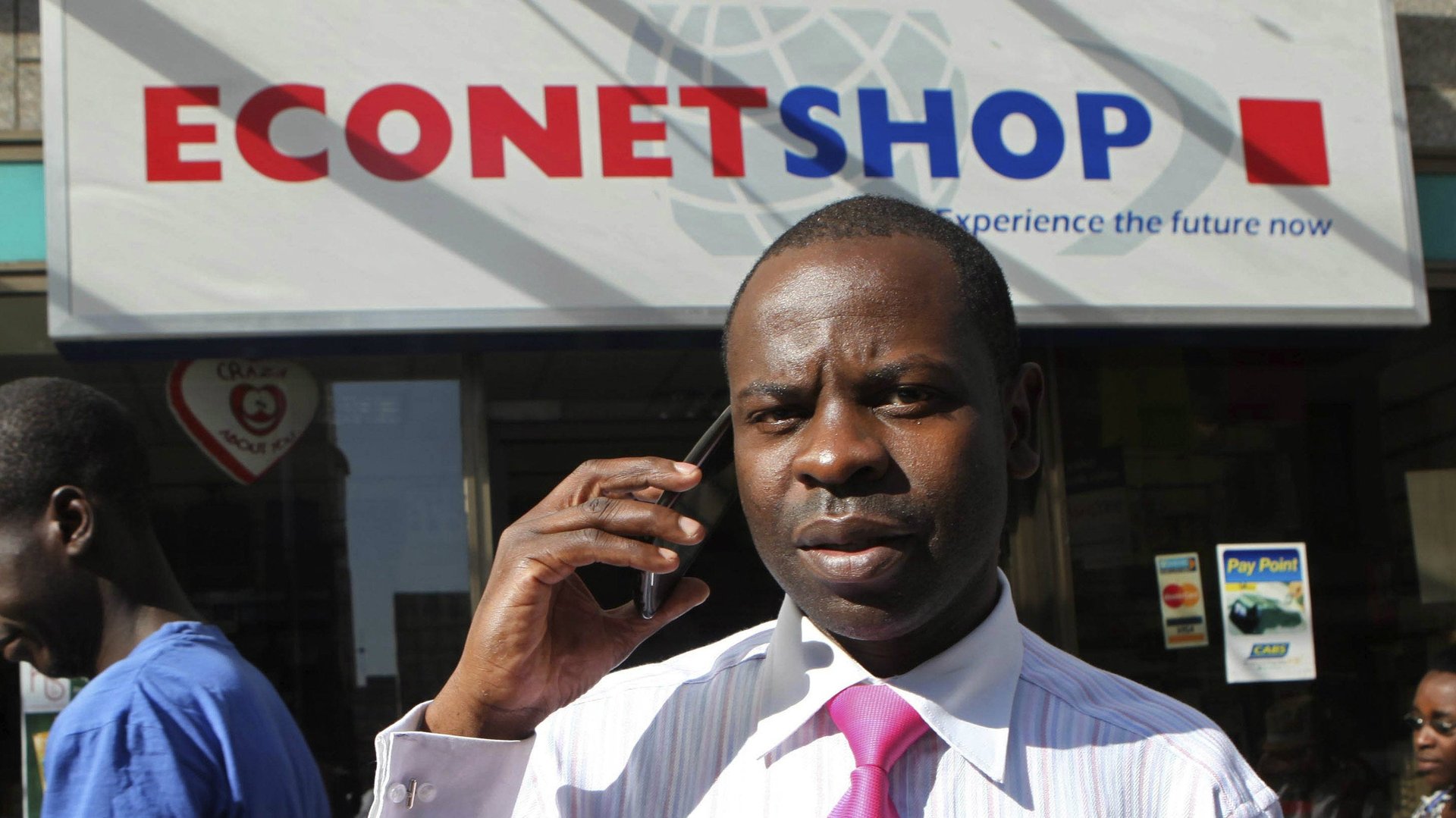African phone companies are evolving into 21st century conglomerates out of necessity
Telecoms operators behind Africa’s mobile phone boom over the past decade are increasingly getting into sectors beyond the traditional communications business.


Telecoms operators behind Africa’s mobile phone boom over the past decade are increasingly getting into sectors beyond the traditional communications business.
Among many examples, MTN, the continent’s largest telecoms operator, is offering off-grid electricity solutions in Nigeria while Orange is partnering with CanalOlympia for a cinema chain in French-speaking African countries. Kenya’s Safaricom has launched an e-commerce platform as well as a “social network.”
Econet Wireless has the Kwese pay TV subsidiary with operations in sixteen African countries. The telecoms company, which has operations mainly in southern Africa, launched Vaya Lift, a ride-hailing service, in Zimbabwe. It has been tested for the past month and already boasts around 500 drivers.
Zimbabwe isn’t virgin ground for ride-hailing services with services like Handei and G-Taxi launching there since 2016, but crucially for Vaya Lift, neither Uber nor Taxify—the continent’s two biggest ride-hailing companies—operate in the country. Econet follows Safaricom, the Kenyan telecoms giant, which launched Little Cabs, a ride-hailing service which competes with Uber, Taxify and Mondo Ride for local market share.
The addition of more units to the core business of telcos is partly down to the slow down of mobile voice revenue growth despite large—and in many cases, growing—subscriber bases. Much of that decline has been attributed to the increasing use of over-the-top (OTT) messaging services like WhatsApp and Facebook Messenger cutting into telco revenues with subscribers increasingly opting to chat and make voice calls with these services.
But it’s also about sheer capability: with millions of dollars in annual revenues, telcos are at a great vantage point to expand into other sectors and leverage their customer base and infrastructure assets. In most African countries, phone companies are one of the few large businesses which have long-term customer relationships with ordinary citizens. In fact, given low financial inclusion compared with higher and growing mobile penetration, phone companies are usually the first and only link for many Africans to the formal economy.
By building various business units, the phone companies could eventually see themselves evolve into 1980s-style US conglomerates with multiple revenue streams but face the challenge of focusing on a core business strategy.
Mobile money has proven to be a particularly low-hanging opportunity for the continent’s biggest telcos with Safaricom’s well-documented success with M-Pesa offering ample proof. Pretty much all of the continent’s biggest telecoms operators offer mobile money services and as they launch more service additions, in-house mobile money and payment services will become a key part of their business infrastructure. (Vaya Lift will accept payments via EcoCash while Safaricom’s Little Cabs collects payments through M-Pesa).
The hunt for additional revenue streams beyond traditional voice and messaging services suggests African telcos will likely continue to morph, competing with banks, global giants like Uber and offering alternatives to local utilities. And it might well pay off, as mobile money has: last year, mobile money accounted for 28% of Safaricom’s service revenues while MTN generated around a quarter of overall average revenue per user across 14 countries from mobile money services, according to a GSMA report.
Sign up to the Quartz Africa Weekly Brief here for news and analysis on African business, tech and innovation in your inbox.